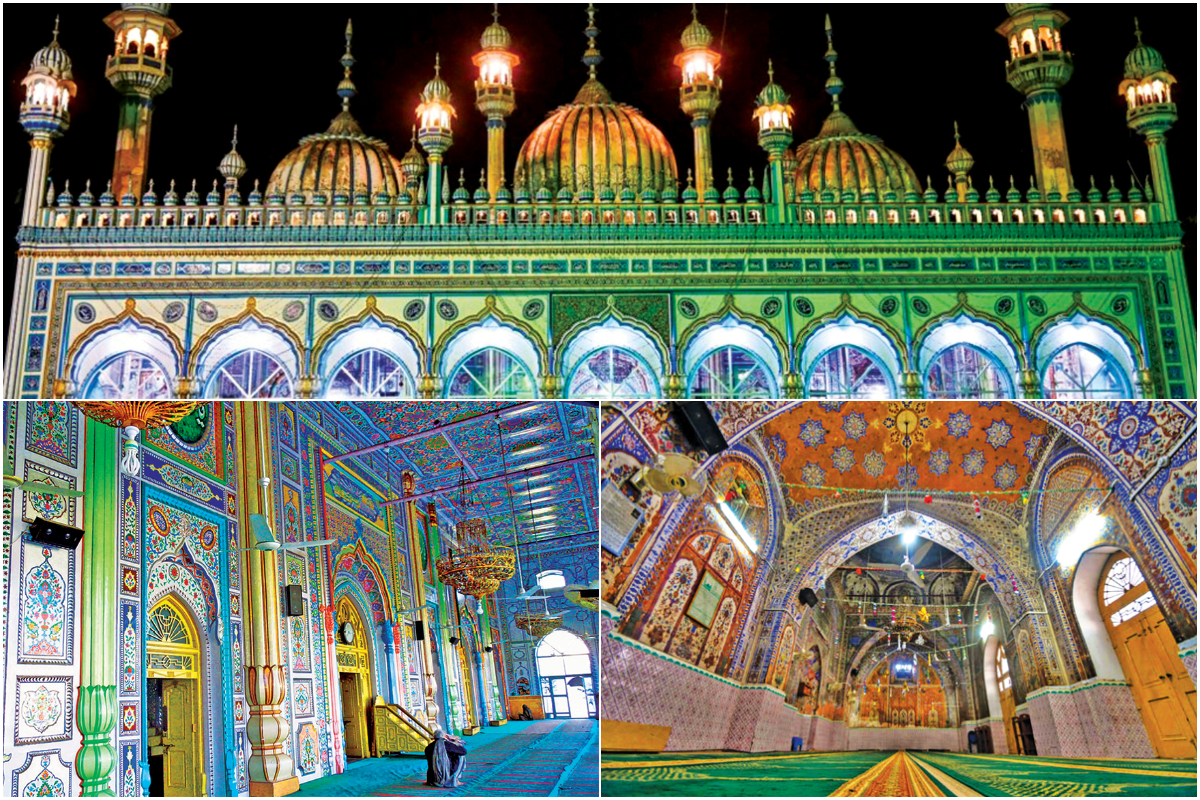Traditional architectural expression
-
12th Feb, 2023. 09:03 am

PHOTOS: MIAN KHURSHEED/BOL NEWS
Early 19th-century mosque spans over 12,100 sq yards
Islamabad: Like the Badshahi Mosque in Lahore and the Mahabat Khan Mosque in Peshawar, the Markazi Jamia Masjid in Rawalpindi imparts an iconic value and is known for its unique architecture and colourful mosaic work as one of the oldest mosques in the city.
Built in the early nineteenth century on Circular Road, a portion of which is now known as Jamia Masjid Road, this historic mosque spans over an area of 20 kanals of land and can accommodate up to 20,000 worshippers at a time.
When you enter the mosque’s premises after driving past the congested Circular Road with its routine traffic mess and encroachments on footpaths, it gives you a pleasant feeling of openness and captivates you with a panoramic view of the grand main hall at the end of a wide courtyard.
There is an ablution area for worshippers on the courtyard’s left side. There is also a water pond, which was also previously used for ablution, but this practise was discontinued following the COVID-19 pandemic over two years ago. Water ponds in mosque courtyards are unique to Mughal architecture and can also be found in the Badshahi Mosque, the Shah Jahan Mosque, and other Mughal-era mosques.
The Masjid has only one entrance and exit on Jamia Masjid Road, and the entrance gate was constructed with beautiful arches and colourful mosaic and fresco work. The construction of Jamia Masjid began in 1903 by an exiled Afghan prince, Shah Muhammad Ayub Shiraz Haider, and was completed two years later, in 1905. At the time, the mosque was built outside the city limits, but it is now in the heart of the city, surrounded by a dense population.
According to some historians, the Afghan prince purchased the land for the mosque and returned to Afghanistan a few months after construction began. Later, a number of wealthy merchants and affluent Muslim families contributed funds to its completion. Several nobles of the area, including Qazi Gohar Ali, Mian Nabi Bakhsh, and Mian Qutbuddin, had played an important role in raising funds for the Masjid’s completion, and some Muslim traders from Peshawar had also significantly contributed to the project.
Molana Muhammad Kech Makrani, father of renowned folk artist Afzal Pervez, was appointed the Masjid’s first Khateeb upon its completion. Syed Mahmood Shah led the first Jumma (Friday) prayer in the mosque, which was attended by notables from nearby towns and cities, including Pir Meher Ali Shah of Golra Sharif.
The mosque is lavishly decorated with fine art and intricate tile work, with frescoes and mosaic work using a variety of colors. Although the mosque’s main architecture and façade are heavily influenced by Mughal architecture, at the same time, local and Multani art and tile work dominate the interior of the main hall. The fresco artwork on the mosque’s interior walls was done by Ghulam Nabi Kamil, a renowned artist of his time in fresco and mosaic work, according to the mosque’s custodian.
The structure features three domes and twelve small minarets. It is one of the few mosques in the Potohar region that is built in the traditional Mughal style. The façade of the mosque is a synthesis of one basic design element—the arch. While the mosque was decorated with traditional fresco, the materials, colours, and techniques used were not traditional, which reflects the development of a local tradition in architectural expression. Moreover, the domes are smaller than in traditional Mughal design, but their odd number along with those of the arches are inspired by Mughal architecture.
The mosque’s rich artwork, which includes bold and graceful mosaics, further adds to its beauty. The interior of the building has remained untouched since its construction, and the walls are adorned with verses from the Holy Quran and Hadiths.
Another interesting and distinctive feature of the mosque’s main hall is that if a cleric or someone speaks in one corner of the hall, he can be clearly heard in the opposite corner due to echoes in the domes. As one of the oldest mosques in Rawalpindi city, the Markazi Jamia Masjid is a magnificent example of the region’s rich culture and architectural triumph.
Catch all the Business News, Breaking News Event and Latest News Updates on The BOL News
Download The BOL News App to get the Daily News Update & Live News.